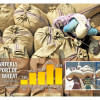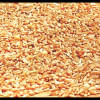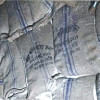Wheat import triples in 5yrs
Bangladesh has emerged as a leading wheat importer in the world with its import volume hitting a record high in the current fiscal year, mainly due to a shift in consumers' diet preference and flourishing baked food market.
In this fiscal year, wheat import stood at 5.4 million tonnes till mid-June, show government statistics.
A world grain market report released last week by the United States Department of Agriculture (USDA) projected that the import volume would hit six million tonnes.
According to an estimate by the United Nations Food and Agriculture Organisation (FAO), Bangladesh's wheat import rose by 24 percent in fiscal 2016-17 compared to that in the previous fiscal year. The UN agency attributed the rise to an increased domestic demand for high-quality wheat for milling.
The country's wheat import tripled in five years to 5.4 million tonnes in FY 2016-17 from 1.8 million tonnes in FY 2012-13.
Market sources said the country has so far spent at least Tk 8,000 crore to foot the huge import bills in the current fiscal year.
The imported wheat is not entirely consumed locally as part of it is used by the bakery industry that exports processed wheat-based food items, they pointed out.
The USDA report titled “Grain: World Markets and Trade” projected that Bangladesh's wheat import would hit 6.8 million tonnes in fiscal 2017-18, making the country the fifth largest importer of the grain in the world.
The other four leading wheat importers are: Egypt (12 million tonnes), Indonesia (9.5 million tonnes), Algeria (8 million tonnes) and Brazil (7 million tonnes).
Market sources attributed this significant growth to an increasing domestic demand and stable international prices of wheat, the world's second most consumed cereal after corn.
Now, Bangladesh produces only one million tonnes of wheat a year on average. It has to import the cereal from Russia, Ukraine, Argentina, Australia, Canada and several other countries to meet the remaining 80 percent of its demand.
Wheat production had hit a record high of 1.9 million tonnes in fiscal 1998-99. But later, the acreage and production began to fall gradually as many farmers switched over to other crops such as maize, potato and vegetables that fetch higher profits.
Wheat acreage fell to its lowest level at 3.58 lakh hectares in fiscal 2011-12. It, however, started to rise with farmers giving preference to wheat over Boro due to slide in rice prices till last year.
But this year, rebound in rice prices and wheat blast disease discouraged farmers from growing wheat.
A move is underway to turn the state-run Wheat Research Centre (WRC) in Dinajpur into an independent research institute for giving fresh impetus to wheat production.
At present, the WRC operates under Bangladesh Agricultural Research Institute.
Agriculture Minister Matia Chowdhury piloted a bill in parliament on June 15, seeking to transform the WRC into Bangladesh Wheat and Maize Research Institute and give it greater mandate for taking measures to increase productivity of both wheat and maize in the country.
Contacted, WRC Director Naresh Chandra Deb said, "We're trying to increase domestic production, develop better breeds and increase the crop's acreage."
He said wheat production is expected to cross 1.4 million tonnes this year with per acre yield rising to 3.25 tonnes from 3.03 tonnes in the previous year. The rise in per acre yield was possible mainly due to better crop management by farmers in the wake of wheat blast disease.
Talking to The Daily Star, Kamruzzaman Kamal, director (marketing) of PRAN-RFL Group, a leading manufacturer of wheat-based food items, said, “The consumers' dietary habits and lifestyle have changed a lot. Many of them now skip rice in lunch or dinner and have snacks, breads, noodles and other food items in which wheat is used."
He said they are exporting many wheat-based food products to markets in India, Europe, USA, Malaysia and the Middle East.
Kamal stressed the need for government efforts to increase wheat production.
Touhiduzzaman, general manager (sales and marketing) of Olympic, one of the country's largest biscuit manufacturers, said imported wheat is milled and the flour is used for manufacturing biscuits, cake, pizza, burgers and other food items.
Though Olympic made a late entry into the export market after meeting the huge demand in the domestic market, its current growth is higher in the export market than in the domestic market.
"We export biscuits in India, the UK, the US, and African and Middle Eastern countries," he added.
Importers credited the rise in wheat's domestic consumption to its lower prices compared to that of rice, change in food habits, and expansion of bakeries and restaurants.
Growing export-oriented food processing sector as well as wheat's stable prices in the global market also contributed to the surge in its import, they said.
Abul Bashar Chowdhury, chairman of Chittagong-based wheat importer BSM Group, said low-income groups in both urban and rural areas are increasingly choosing wheat-based food items for their cheap prices.
According to a FAO report, while rice prices marked a steep rise, prices of imported wheat and flour have been generally stable over the last 12 months as a result of improved availabilities from the 2017 wheat harvest and increased imports in recent months.
The continuing distribution of flour by the government through Open Market Sales also helps keep its prices at low levels, the FAO noted.

 For all latest news, follow The Daily Star's Google News channel.
For all latest news, follow The Daily Star's Google News channel. 








Comments